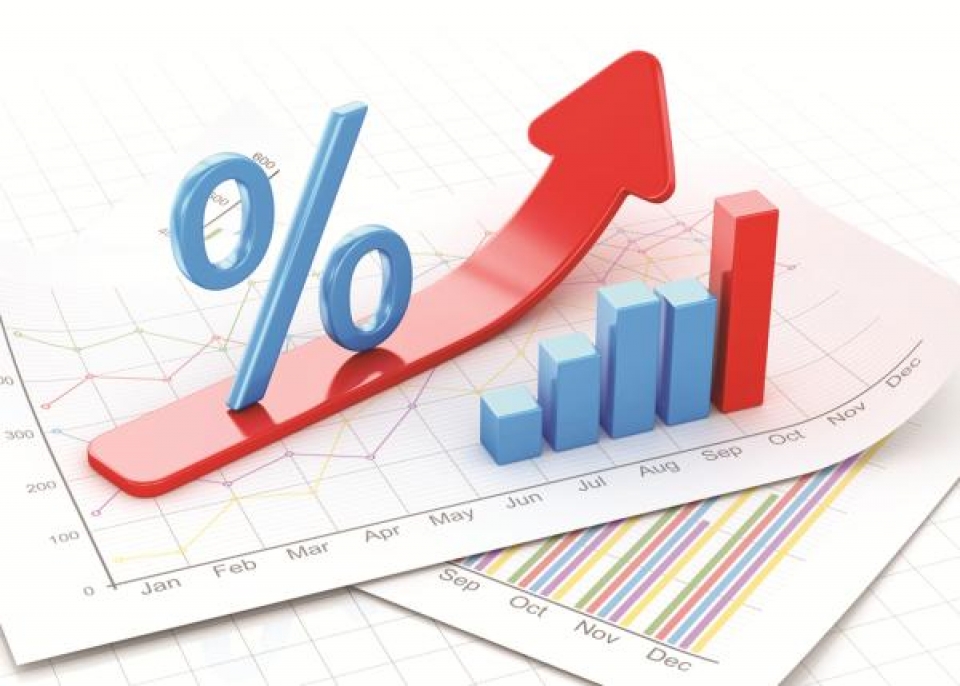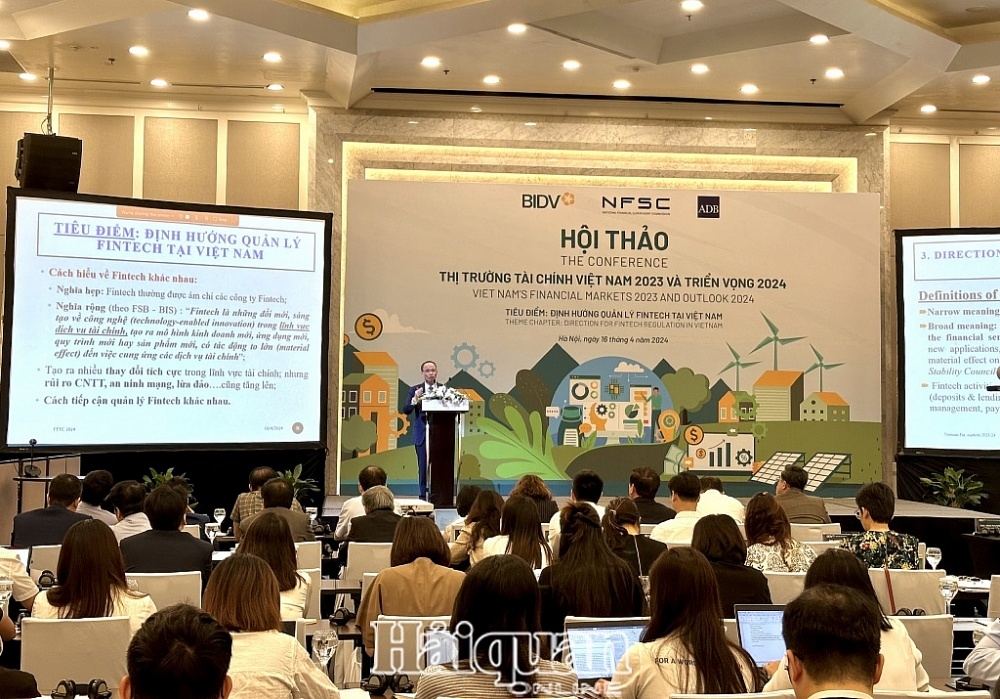“Hidden” pressures of interest rates
 |
| Interest rates will be stable if seeking a right direction in management. Picture: ST. |
Many pressures.
The wave of increasing deposit interest rates through certificates of deposit with high-interest rates of up to 9% per year has raised expectations for the 2017 deposit rates of the public and investors. Though some banks remain “silent” and even “upstream” to reduce interest rates, the expectations and pressures on the interest rates are very large, because of both subjective and objective reasons in the financial – banking system.
Among these reasons, largely come from the regulation on the reduction of the use of short-term loans for medium and long term loans from 60% to 50% since the beginning of 2017 prescribed by the Circular No. 06/2016/TT-NHNN amending some articles of the Circular No. 36/2014/TT-NHNN on the limits, ensuring safety in the operation of credit institutions. A macroeconomic report of the National Financial Supervisory Commission shows that, in 2016, the rate of using short-term loans for medium and long term loans increased from 31.8% (in 2015) to 35%, some credit institutions have rates closing to the ceiling level of 50%.
However, as Dr. Nguyen Duc Do, Deputy Head of the Financial-Economic Institute at the Ministry of Finance Academy says, if the main reason for banks to raise interest rates over the times was the imbalance of terms between deposits and loans, the situations wouldn’t be too serious because when banks met the demand, they would stop increasing interest rates. “However, if the reason was due to the lack of overall savings in the economy, everything would be different”, Dr. Do says.
In the latest development, the State Bank has reassured that, because of the need for capital at a certain point in time, several commercial joint stock banks may increase the local and temporary interest rates but then adjusted to reduce in accordance with the supply – demand in the market. In fact, the liquidity of the banking system is quite plentiful, the market has no pressure to raise interest rates. Thus, in general, the deposit interest rates and lending rates for loans commercial joint stock banks remain stable.
This raises a question: Is the announcement of the manager just a word of reassurance when the market is waving or a statement reflecting the market?
In fact, the issues of inflation, exchange rates, government bonds or the liquidity of banks have an influence on the interest rates in the current and future. The latest statistics from the General Statistics Office showed, as of March 20, 2017, capital mobilization of commercial banks increased by 2.43% (increased by 2.26% compared to the same period in 2016). Credit growth in the first three months of the year had the highest increase over the past six years, reached 2.81%. Thus, despite the higher credit growth, the difference was not much. Moreover, interest rates in the interbank market in recent months have been maintained at a stable level, having increased and decrease, but not strong. This means liquidity in banks is quite stable, so they are unable to raise interest rates to fall into crisis. Besides, although the exchange rate has always been a concern when there are many unpredictable factors, the State Bank is still operating quite stable. However, as the Federal Reserve (FED) can continue to raise USD interest rates, but the USD is down among other strong currencies, Vietnam is in trade deficit, the amount of foreign currency poured not as high as expected, this could affect the exchange rate management of the State Bank in the coming time. According to the General Statistics Office, the average inflation in the first three months in 2017 rose by 1.66% compared to the same period in 2016 due to high price in the market, but it is expected to remain at a low level until the end of the year.
However, according to Dr. Nguyen Duc Do, the real interest rate (nominal interest rate minus inflation) in Vietnam has been kept at a relatively high level before the wave of raising deposit interest rates. According to a data of the World Bank, in 2013, the real lending rate in Vietnam was above 5%, and in 2015 was 7.3% - a high level over the past 20 years, only below the peak of 10% in 1996.
"The increase in real interest rates in Vietnam is mainly due to nominal interest rates decreasing slowly while inflation is falling relatively quickly. Moreover, the pressure to raise interest rates in 2017 is also due to a strong increase of capital mobilization in 2016. Compared with the income growth of the whole economy in 2016, depositors advanced partly deposits for 2017. Therefore, raising capital in 2017 will face many difficulties”, Dr. Nguyen Duc Do said.
Need to be drastic
The risk which always exists and is ready to “break-out” of the banking system is bad debt. A report of the State Bank shows that, after 4 years of implementation of the project “Restructuring the system of Cis in the 2011-2015 period” and after over 3 years of implementation of the project “Handling bad debt of the systems of Cis” and project “The establishment of the Vietnam Asset Management Company (VAMC), the bad debt on the balance sheet has been controlled to less than 3%, but bad debt tends to increase again. As of December 31, 2016, the bad debt on the balance sheet, bad debt under the VSMC’s management and debt having the potential to become bad debt are likely to be up to 8.86% of the total outstanding loan due to the handling of security assets and bad debt faces many difficulties.
According to Dr. Can Van Luc, a financial and banking expert, bad debt is not a new problem but it is causing bank liquidity to decrease and forcing them to raise mobilization, then several banks with high bad debt must offer higher interest rates. Thus, the reduction of interest rates is still difficult.
Therefore, the SBV has consulted to draft law on supporting credit institution restructuring and handling bad debt to perfect the legal framework to deal with bad debt and weak credit institutions, ensuring the interests of depositors and maintaining the stability, sustainable development for the entire banking system in particular, and the whole economy in general.
According to experts, the State Bank should focus on many solutions at the same time. Dr. Can Van Luc thinks that, the State Bank must speed up and strengthen the process of restructuring weak banks and handling bad debt; find measures to increase capital mobilization from the public for production and business, control the credit growth at a not too hot level; watch closely internal and external events to handle timely; and finally, not be subjective with inflation.
Agreed with this view, Dr. Nguyen Duc Do said we can be optimistic about interest rates if the State Bank has determined to deal with weak banks drastically, notably, banks have been acquired for 0 vnd.
Thus, the issue of interest rates is being put on the shoulders of managing agencies. Though the increase in interest rates over the time may be a business strategy with favorable market conditions to support, worries remain “exist” as the world and domestic economies have many changes. Moreover, when the banking system is taking too many heavy responsibilities of the macro economy, the capital needs are accrued to credit institutions, the interest rate pressure will not be decreased by advantages, eventually, there is a risk of “broke” if the operators are lacking fierce and not handle in the right direction.
Related News

The biggest challenges businesses are facing
15:28 | 20/10/2024 Headlines

Determine tools, policy for inflation control
14:11 | 19/07/2024 Finance

How to stabilize the gold market?
09:53 | 03/06/2024 Headlines

The exchange rate will gradually cool down from the end of the second quarter of 2024, while interest rates will remain low
09:32 | 23/04/2024 Finance
Latest News

Removing legal hurdles in regular spending for capital assets
09:02 | 05/11/2024 Finance

M&A activities show signs of recovery
13:28 | 04/11/2024 Finance

Fiscal policy needs to return to normal state in new period
09:54 | 04/11/2024 Finance

Ensuring national public debt safety in 2024
17:33 | 03/11/2024 Finance
More News

Removing many bottlenecks in regular spending to purchase assets and equipment
07:14 | 03/11/2024 Finance

Continue to handle cross-ownership in banks
10:35 | 02/11/2024 Finance

Striving for average CPI not to exceed 4%
16:41 | 01/11/2024 Finance

Delegating the power to the government to waive, lower, or manage late tax penalties is suitable
16:39 | 01/11/2024 Finance

Removing difficulties in public investment disbursement
09:30 | 31/10/2024 Finance

State-owned commercial banking sector performs optimistic growth, but more capital in need
09:28 | 31/10/2024 Finance

Stipulate implementation of centralized bilateral payments of the State Treasury at banks
09:29 | 29/10/2024 Finance

Rush to finalize draft decree on public asset restructuring
09:28 | 29/10/2024 Finance

Inspection report on gold trading activities being complied: SBV
14:37 | 28/10/2024 Finance
Your care

Removing legal hurdles in regular spending for capital assets
09:02 | 05/11/2024 Finance

M&A activities show signs of recovery
13:28 | 04/11/2024 Finance

Fiscal policy needs to return to normal state in new period
09:54 | 04/11/2024 Finance

Ensuring national public debt safety in 2024
17:33 | 03/11/2024 Finance

Removing many bottlenecks in regular spending to purchase assets and equipment
07:14 | 03/11/2024 Finance




